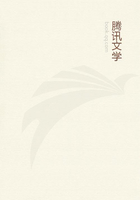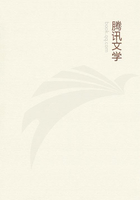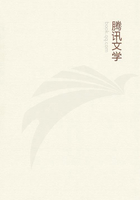{32} Dr. M'Nab remarks (Trans. Bot. Soc. Edinburgh, vol xi. p. 292) that the tendrils of Amp. Veitchii bear small globular discs before they have came into contact with any object; and I have since observed the same fact. These discs, however, increase greatly in size, if they press against and adhere to any surface. The tendrils, therefore, of one species of Ampelopsis require the stimulus of contact for the first development of their discs, whilst those of another species do not need any such stimulus.
We have seen an exactly parallel case with two species of Bignoniaceae.
{33} Fritz Muller remarks (ibid. p. 348) that a related genus, Serjania, differs from Cardiospermum in bearing only a single tendril; and that the common peduncle contracts spirally, when, as frequently happens, the tendril has clasped the plant's own stem.
{34} Prof. Asa Gray informs me that the tendrils of P. sicyoides revolve even at a quicker rate than those of P. gracilis; four revolutions were completed (the temperature varying from 88 degrees- 92 degrees Fahr.) in the following times, 40 m., 45 m., 38.5 m., and 46 m. One half- revolution was performed in 15 m.
{35} See M. Isid. Leon in Bull. Soc. Bot. de France, tom. v. 1858, p. 650. Dr. H. de Vries points out (p. 306) that I have overlooked, in the first edition of this essay, the following sentence by Mohl: "After a tendril has caught a support, it begins in some days to wind into a spire, which, since the tendril is made fast at both extremities, must of necessity be in some places to the right, in others to the left." But I am not surprised that this brief sentence, without any further explanation did not attract my attention.
{36}Sachs, however ('Text-Book of Botany,' Eng. Translation, 1875,p. 280), has shown that which I overlooked, namely, that the tendrils of different species are adapted to clasp supports of different thicknesses. He further shows that after a tendril has clasped a support it subsequently tightens its hold.
{37}Annales des Sc. Nat. Bot. 4th series, tom. xii. p. 89.
{38} It occurred to me that the movement of notation and that from a touch might be differently affected by anaesthetics, in the same manner as Paul Bert has shown to be the case with the sleep-movements of Mimosa and those from a touch. I tried the common pea and Passiflora gracilis, but I succeeded only in observing that both movements were unaffected by exposure for 1.5 hrs. to a rather large dose of sulphuric ether. In this respect they present a wonderful contrast with Drosera, owing no doubt to the presence of absorbent glands in the latter plant.
{39}Text-Book of Botany, 1875, p. 779.
{40} Journal of Linn. Soc. vol. ix. p. 348.Professor G. Jaeger haswell remarked ('In Sachen Darwin's, insbesondere contra Wigand,' 1874, p.
106) that it is highly characteristic of climbing plants to produce thin, elongated, and flexible stems. He further remarks that plants growing beneath other and taller species or trees, are naturally those which would be developed into climbers; anti such plants, from stretching towards the light, and from not being much agitated by the wind, tend to produce long, thin and flexible shoots.
{41} Professor Asa Gray has explained, as it would appear, this difficulty in his review (American Journal of Science, vol. xl. Sept. 1865,p. 282) of the present work. He has observed that the strong summer shoots of the Michigan rose (Rosa setigera) are strongly disposed to push into dark crevices and away from the light, so that they would be almost sure to place themselves under a trellis. He adds that the lateral shoots, made on the following spring emerged from the trellis as they sought the light.
{42} Mr. Spiller has recently shown (Chemical Society, Feb. 16, 1865), in a paper on the oxidation of india-rubber or caoutchouc, that this substance, when exposed in a fine state of division to the air, gradually becomes converted into brittle, resinous matter, very similar to shell-lac.
{43} Fritz Muller informs me that he saw in the forests of South Brazil numerous black strings, from some lines to nearly an inch in diameter, winding spirally round the trunks of gigantic trees. At first sight he thought that they were the stems of twining plants which were thus ascending the trees: but he afterwards found that they were the aerial roots of a Philodendron which grew on the branches above. These roots therefore seem to be true twiners, though they use their powers to descend, instead of to ascend like twining plants. The aerial roots of some other species of Philodendron hang vertically downwards, sometimes for a length of more than fifty feet.
{44} Quoted by Cohn, in his remarkable memoir, "Contractile Gewebe im Pflanzenreiche," 'Abhandl. der Schlesischen Gesell. 1861, Heft i. s. 35.
{45} Such slight spontaneous movements, I now find, have been for some time known to occur, for instance with the flower-stems of Brassicanapus and with the leaves of many plants: Sachs' 'Text-Book of Botany' 1875, pp. 766, 785. Fritz Muller also has shown in relation to our present subject ('Jenaischen Zeitschrift,' Bd. V. Heft 2, p. 133) that the stems, whilst young, of an Alisma and of a Linum are continually performing slight movements to all points of the compass, like those of climbing plants.
{46} Mr. Herbert Spencer has recently argued ('Principles of Biology,' 1865, p. 37 et seq.) with much force that there is no fundamental distinction between the foliar and axial organs of plants.
{47}Annales des Sc. Nat. 4th series, Bot. tom. vi. 1856, p. 31.
{48} Moquin-Tandon (Elements de Teratologie. 1841, p. 156) gives the case of a monstrous bean, in which a case of compensation of this nature was suddenly effected; for the leaves completely disappeared and the stipules grew to an enormous size.
End of The Project Gutenberg Etext of Climbing Plants by Charles Darwin














